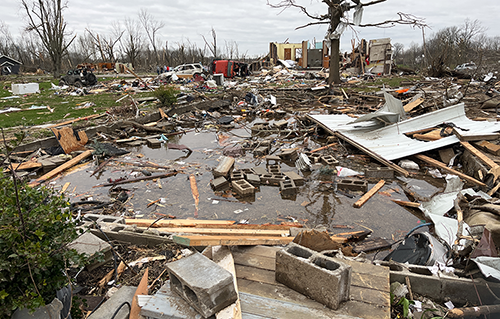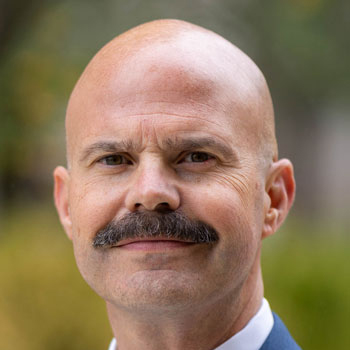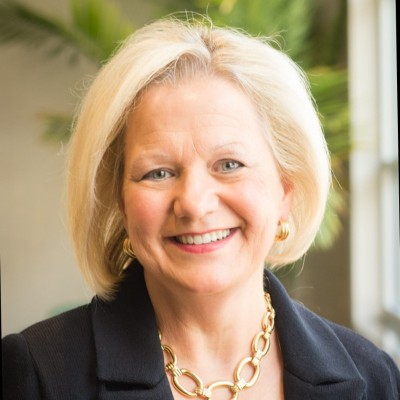Foundations Respond to Disasters, Learn Lessons

On the evening of March 31, a massive storm system made its way through Indiana.
An EF3 tornado, capable of winds up to 165 mph, swept through the Wabash Valley area. The city of Sullivan was one of the hardest hit. When the storm dissipated, more than $8 million in property damage was done. Hundreds of homes and businesses were destroyed. Three people died.
The wreckage wrought by the tornado was severe enough for President Biden to declare it a major disaster. Unlike the homes hit in other parts of Indiana, where most families had insurance, most hit in Sullivan County were without coverage for their homes or property.
Local government officials knew people wanted to donate but initially couldn’t offer an avenue to direct them toward. The Wabash Valley Community Foundation (WVCF) answered the call. Thanks to relationships forged through GIFT VII—Lilly Endowment Inc.’s latest funding phase to community foundations—WVCF and United Way of Wabash Valley set up the Help Sullivan Recover Fund. Their website had a donation link ready within hours following the storms.
Alaina Burton, WVCF director of communications, said they contacted Sullivan Mayor Clint Lamb that morning. “We received our first donation roughly 12 hours after the storm,” she said. “From there, they just started pouring in.”
Thus far, more than 900 donors from 32 states have given over $1 million to assist in the long-term recovery efforts.“It’s heartwarming to see the response from throughout the nation,” Beth Tevlin, WVCF president and CEO, said. “The outpouring of support has been phenomenal.”
Beyond establishing the fund, WVCF played a leadership role in coordinating other storm responses. From the start, Harmony Walsh, WVCF’s community engagement officer for Sullivan County, was on-site to relay information regarding immediate needs. Through community grants, WVCF helped facilitate purchases of supplies and food for the volunteers, including the Salvation Army, EMAs, and first responders.
WVCF also serves as the fiscal sponsor for the Sullivan County Long-Term Tornado Recovery Coalition (SCLTRC), which follows the Volunteer Organizations Active in Disaster (VOAD) model.
“I was able to drop by and check on the WVCF team during the disaster effort,” IPA CEO Claudia Cummings said. “Their willingness to drop everything and pitch in was exceptional. I am proud to count them as an IPA member.”
Joel Thacker, executive director of the Indiana Department of Homeland Security (IDHS), which includes the State Emergency Management Agency, applauds WVCF and other community foundations for their roles in helping communities rebuild:
“Community foundations are critical to successful response and recovery efforts for major disaster events like tornadoes. IDHS stands ready to assist local governments and Hoosiers before, during, and after disasters like these, but we cannot do it alone. We praise our community foundation partners who take the time to help Hoosiers when they are most vulnerable. Their helping hands make a world of difference to victims and help IDHS achieve its mission of providing a safe, secure, and resilient Indiana.”
PERCEPTION PROBLEMS
A recent Indiana Public Media article highlighted an issue WVCF encountered through this situation: public misunderstanding of what community foundations can and can’t do at stages of the disaster relief process.
To the perception of some locals, WVCF was sitting on a large amount of unused funds in a situation that, even four months later, still needs rectifying. “Because we’re not giving out money now, the public’s perception of the community foundation and SCLTRC is plummeting,” Tevlin said. “We see it on social media all the time. They don’t understand why we don’t just hand them a check.”
The reality is more complicated. “We have to wait until people get their insurance claims settled, or their FEMA [Federal Emergency Management Agency] claims settled,” Tevlin said, adding that if they give people funds right away, it could preclude those same individuals from receiving FEMA or Small Business Administration (SBA) aid.
WVCF’s procedure here is consistent with the advice given by Council on Foundation (COF)’s Disaster Grantmaking: A Practical Guide for Foundations and Corporations (COF membership required), which states “grantmakers can play a useful role by waiting a few weeks or months to see what important recovery needs remain after the relief agencies have moved on.”
COF suggests splitting your grant—one part for immediate relief and another held for recovery process gaps still evident after a few weeks or months.
For now, WVCF waits on FEMA and SBA funds to be dispensed. At that point, those impacted can work with SCLTRC and case managers to assess who has the most significant unmet needs and provide funds. “Emotions are high, and rightfully so—these people are so vulnerable and have lost everything. We understand their frustration,” Burton said.
Although the early rush of donations has slowed considerably—in today’s 24-hour news cycle, the four months since the tornadoes can seem like an eternity—the reconstruction process in Sullivan will continue for some time. The current recovery timeline is estimated at two-and-a-half to three years. “We’ll need more funding and will need more fundraisers and awareness efforts because donations have trickled off,” Tevlin said, adding that the estimated total cost to rebuild the area is $8.8 million.
LESSONS LEARNED
Tevlin says the experience taught her lessons she believes could be helpful to other foundations if they, too, are faced with a disaster in their communities. One is that community foundations should be as transparent as possible every step of the way. “From the beginning, our priority has been to ensure these donations go toward the long-term recovery efforts for those affected by this disaster—which is why we’ve waived all administrative fees for the Help Sullivan Recovery Fund,” Tevlin said.
Several factors come into play to ensure survivors receive the most resources to begin rebuilding their lives. “This includes following the VOAD model, which can be a slow but necessary process, Tevlin said. “Our efforts are also largely dependent on those available to volunteer as case managers. There are so many open cases, but not enough volunteers to help move cases to the unmet needs table.”
COF’s Disaster Grantmaking reinforces Tevlin’s advice on transparency, recommending that foundations “don’t be shy about communicating your disaster grantmaking activities and experience with both internal and external audiences…communicate your disaster grantmaking and the lessons you have learned from it.”
Tevlin recommends other communities put in place a Community Organization Active in Disaster (COAD) and keep it active, even if there isn’t a current emergency to deal with. WVCF didn’t have an active COAD, as the previous large-scale disaster (the 2008 flood) in the Wabash Valley area was over 15 years ago. She said keeping the COAD active during this period would have assisted in recovery efforts in the immediate aftermath of the tornado.
“I have a feeling that many counties in Indiana do not have a COAD,” Tevlin said. “The community foundation is in the process of creating a disaster recovery plan to have on standby in each of our three counties to ensure we can swiftly act if and when the need arises.”
Amy Haacker, IPA vice president of community foundation programs, says communities must have a COAD to get funds in the event of a disaster. While community foundations often convene these groups, given their connections in the community, they aren’t direct service providers. COADs should include those providers. As Tevlin said, communities should keep COADs going even if there are no disaster relief efforts going on. “They don’t have to meet frequently, but you want to keep them intact, so if something does happen, you can get those funds turned around more quickly,” Haacker said.



